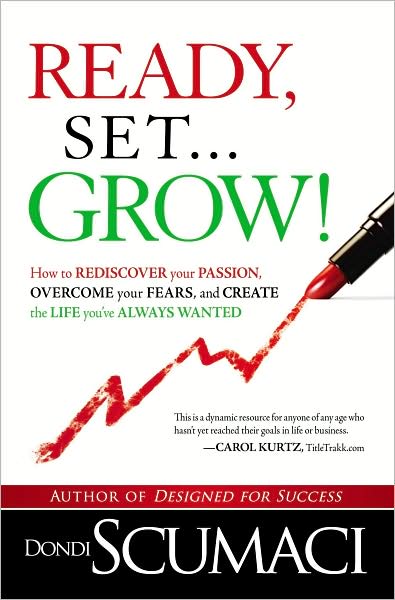Training the Vine: How to Get Positive Feedback at Work

When it comes to garden stakes and clippers, think feedback
There is a paradox in every beautiful garden. Cutting back or pruning strengthens, promotes growth, and encourages plants to bloom. As it turns out, these are just a few of the benefits.
Pruning lets in light and air. It removes what is damaged and highlights the best features of a plant. It rejuvenates old plants or those that have been neglected. It can change the direction of growth or inspire growth in a new area. It controls pests and helps plants fit into difficult or tight spaces. (Pruning ensures that plants don’t invade the space of others. Sounds like another lesson in boundaries!)
What a wonderful metaphor for growing people! While the process of cutting away what doesn’t work or what is limiting our growth may be uncomfortable, it is clearly profitable. I love the idea of letting more air and light into my life, removing what is damaged, and showcasing my best features! Most of us have at one time or another needed help in a difficult place or space. And rejuvenation? Bring it on! Even the definition gets my attention: to make young again; “to restore to a former state; make fresh or new again.”
When it comes to garden stakes and clippers, think feedback. Feedback is one of the most effective tools available to you. Use it to reinforce what is working and to cut away what is not. The call to action here is continuous improvement. It is taking feedback, whether spoken or silent, and putting it to work for you—making it profitable.
What have you learned and implemented in the last thirty days based on feedback? When I ask that question, even in large audiences only a few people can honestly answer. The majority of the people I speak with are waiting for feedback to knock on their door. When it does, they crack open the door slowly and invite feedback in very cautiously (or begrudgingly), like an unwelcome guest to dinner.
Sometimes feedback feels like a slap in the face. (Believe me, I’ve been there. There are days when I feel like I’ve received more feedback than any human deserves in a lifetime.) When that happens, we may feel like slamming the door on this rude, ungrateful guest! Or perhaps we go to the other extreme. We change feedback into a weapon and beat ourselves silly with it. We turn the feedback over and over in our mind and learn the wrong lesson from it. Denying feedback or brutalizing ourselves with it is (at the very least) unproductive.
For a life trying to grow, feedback is essential; it is one of the tools we use to train our growth. We leverage feedback when we learn to do two things well—first, know where to find it, and second, know how to process it effectively.
Honestly, feedback is all around us. It is in what people say or don’t say, in the assignments we receive (or don’t), in how others respond to us, and, ultimately, in the results we achieve. Some of the most profitable feedback can be found in what is frustrating you right now! When we don’t get the support we need or the response we expected, that is feedback. When something isn’t working the way it should, we are getting feedback.
If you are fortunate, you work for and with people who know how to give and receive feedback in a healthy and constructive way. The dialogue is open, honest, and designed to help people grow. But what if that does not describe your situation?
When it comes to feedback, we are wise to remember that people give us what they have, not necessarily what we need.
You may have to coach the coach to get your feedback or to make the feedback you are getting more useful. That was the case for Connie.
Connie’s feedback generally happened once each year with her performance review. Typically, the conversation was shallow and strained. “My manager was extremely nervous, and that made me nervous,” she laughs. “It was so awkward. I would leave the meeting not quite sure how I was doing or what I could be doing differently. Sometimes I left thinking a giant elephant had been in the room, but neither of us wanted to talk about it.”
That’s when Connie decided to coach the coach. “I flipped the process over completely,” she told me. “I asked my manager the questions I needed her to ask of me. For example, she wasn’t thinking about how I could become more valuable to the organization, so I asked her that question. I also asked her to think about my future with the organization—what I could be doing to prepare for my next steps.”
Asking strategic questions put Connie in the driver’s seat with her feedback. “It definitely changed the scope of our conversations,” Connie says as she smiles broadly. “The questions I asked required my manager to think about me differently. At first, she didn’t have solid input for me, but over time the quality of the feedback improved.”
We’d like to think that people in management positions know how to give quality feedback. Unfortunately, that is not always true. Some managers are terrible at it or, at the very least, uncomfortable with it. We can’t afford to wait for them to figure it out.
Realizing that her manager was uncomfortable providing feedback was also an important clue for Connie. “I made it very safe for her to share her opinions and perspectives with me. Instead of waiting for her to break the ice, I did that for both of us.”
Connie’s process is actually brilliant. She found a way to manage her manager and her feedback. If you recognize Connie’s predicament, here is an outline of the steps she took to take control:
1. Ask strategic questions about how you can create more value in your current role and prepare for the future. (“What do you see as my greatest strengths, and how can I use them more often and more effectively?”)
2. Ask the questions you wish your coach were asking! (“What do you see as a next, natural step for me, and how can I prepare to take that step?”)
3. Find ways to open the dialogue and make feedback a more natural part of day-to-day communications. (“I want to make sure I am focusing on the top priorities. How can I have more of an impact on what is truly important?”)
As in Connie’s case, getting quality feedback is the first step. How you process the data is also critical. Feedback can build and strengthen you, or it can tear you up and tear you down. Here are seven things to keep in mind as you seek out and process feedback:
Separate yourself from the feedback. Depersonalize it. Remember, feedback is perception. It does not define who you are or what you are capable of. It simply reveals an impression. That’s a good thing, because impressions revealed can be managed. Consider the alternative. When it comes to feedback, ignorance is not bliss. What you don’t know can hurt you or, at the very least, hold you back.
Seek to understand the feedback. Whether you agree or disagree with the feedback you are receiving, make it your goal to understand. Resist every temptation to explain or justify. Instead, ask questions to clarify. Remember, agreement is not the goal. Understanding is.
Isolate the parts you can control. There may be things inside of feedback you cannot personally control. Acknowledge these, and focus your energy and responses on the things you can do something about.
Share your action plan. Honor feedback by letting people know what you plan to do with it. This may be as simple as, “I appreciate your perspective on this, and I will keep it in mind.” Or it may be a list of action items you plan to implement.
Take a break! If the feedback is particularly difficult or delivered in an awkward or ineffective way, you may need to step back. Have your script ready! You can say, “You’ve certainly given me something to think about. I’d like to do that before we discuss it further.”
Get a second opinion! If you receive feedback that is difficult to accept or out-of-the-ballpark different from feedback you’ve received in the past, consult a mentor. Ask for some help in processing the data to understand what it means and how to manage it productively.
Look for clues about what is important. The feedback you receive tells you what is important to others—what they value. When you know what people value, you are in a better position to increase your value to them! At the very least, you will understand how to manage their expectations in the future. In this light, even negative feedback is a win. (It won’t feel like you are winning when you receive it. Trust the process, and review items 1–6.)
A personal balance sheet will assist you in processing and managing feedback.1 Make three columns and label them: "Strengths/Abilities," "Emerging Strengths," and "Areas of Development." The balance sheet works on the premise that you have value and you have the ability to increase your personal value. It allows you to plan, mark, and promote your growth.
In the strengths column, list your abilities and areas of expertise. These are the skills and knowledge areas you own and are known for. Emerging strengths are things you are working on; for example, you are practicing and increasing your confidence; you are close to the tipping point and beginning to hit your stride. The development areas are your gaps. You need to add these to abilities in order to achieve your goals.
As you build your balance sheet, refer to the beliefs you captured and cataloged when we started. How are those reflected here? Pull out your goals, and have a conversation with a coach or mentor. In reviewing the balance sheet, here are a few things you may want to think about:
Are your strengths known to you and to others?
How are you measuring progress on the emerging strengths? Is your progress visible to others?
What is the most important area of development now?
How can you design opportunities to develop in those areas?
The balance sheet is an ongoing and dynamic process of addition. When you master an emerging strength, it shifts to the strengths column. As your goals come into focus and you process feedback, you will identify areas needing more attention or development. Each time you add an ability or strength, you increase your value. You reduce the gaps and create opportunity.
Dondi Scumaci is an international speaker, author, and expert in leadership development, communication, talent management, and mentoring. She is known for high energy on the platform and for the dramatic results her presentations inspire. She is the author of Designed for Success and lives in San Antonio with her husband, Scumaci, and son, Tabor.
Originally published May 11, 2009.






